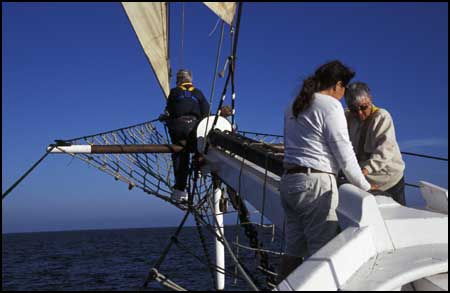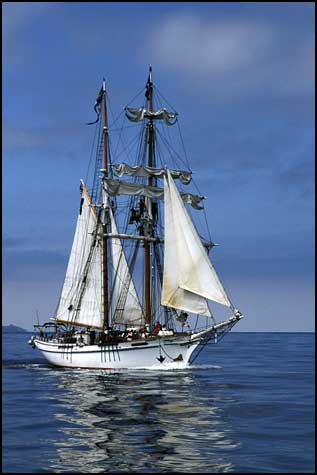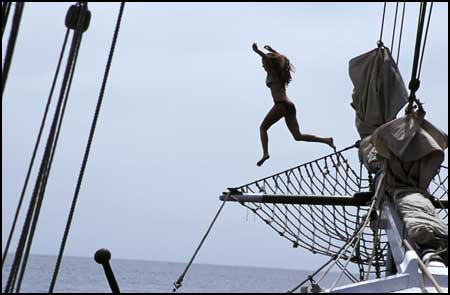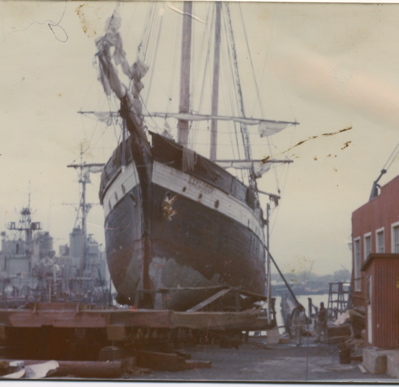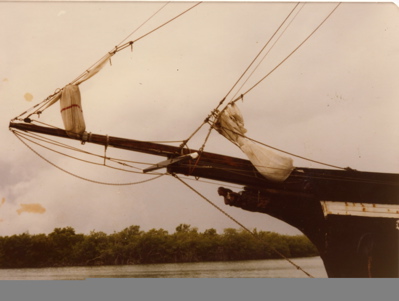By Peter Andrews, © 1998.
 From the bowsprit of the Bounty, mid South Pacific. A similar image taken by myself, was published in a sailing publication without consent. The image was taken with one of a number of other camera's I had taken out to the end of the bowsprit to capture this image. The bowsprit is considerably the worst place on the ship to fall overboard. Considering the bottom of the ship is relatively flat, a person falling from the bowsprit could be drawn along the length of the ship's keel and into the path of the rotating propellers. One person who was not prepared to take the risk, wrote a small article about the voyage and sent it along with the image I had taken with their camera, to a sailing magazine for publication. Considering the lack of consent or any acknowledgement for the image, I contacted the editor of the publication and successfully enforced copyright regulations to receive payment, accreditation and an apology, published within an editorial of a later issue."
From the bowsprit of the Bounty, mid South Pacific. A similar image taken by myself, was published in a sailing publication without consent. The image was taken with one of a number of other camera's I had taken out to the end of the bowsprit to capture this image. The bowsprit is considerably the worst place on the ship to fall overboard. Considering the bottom of the ship is relatively flat, a person falling from the bowsprit could be drawn along the length of the ship's keel and into the path of the rotating propellers. One person who was not prepared to take the risk, wrote a small article about the voyage and sent it along with the image I had taken with their camera, to a sailing magazine for publication. Considering the lack of consent or any acknowledgement for the image, I contacted the editor of the publication and successfully enforced copyright regulations to receive payment, accreditation and an apology, published within an editorial of a later issue."
